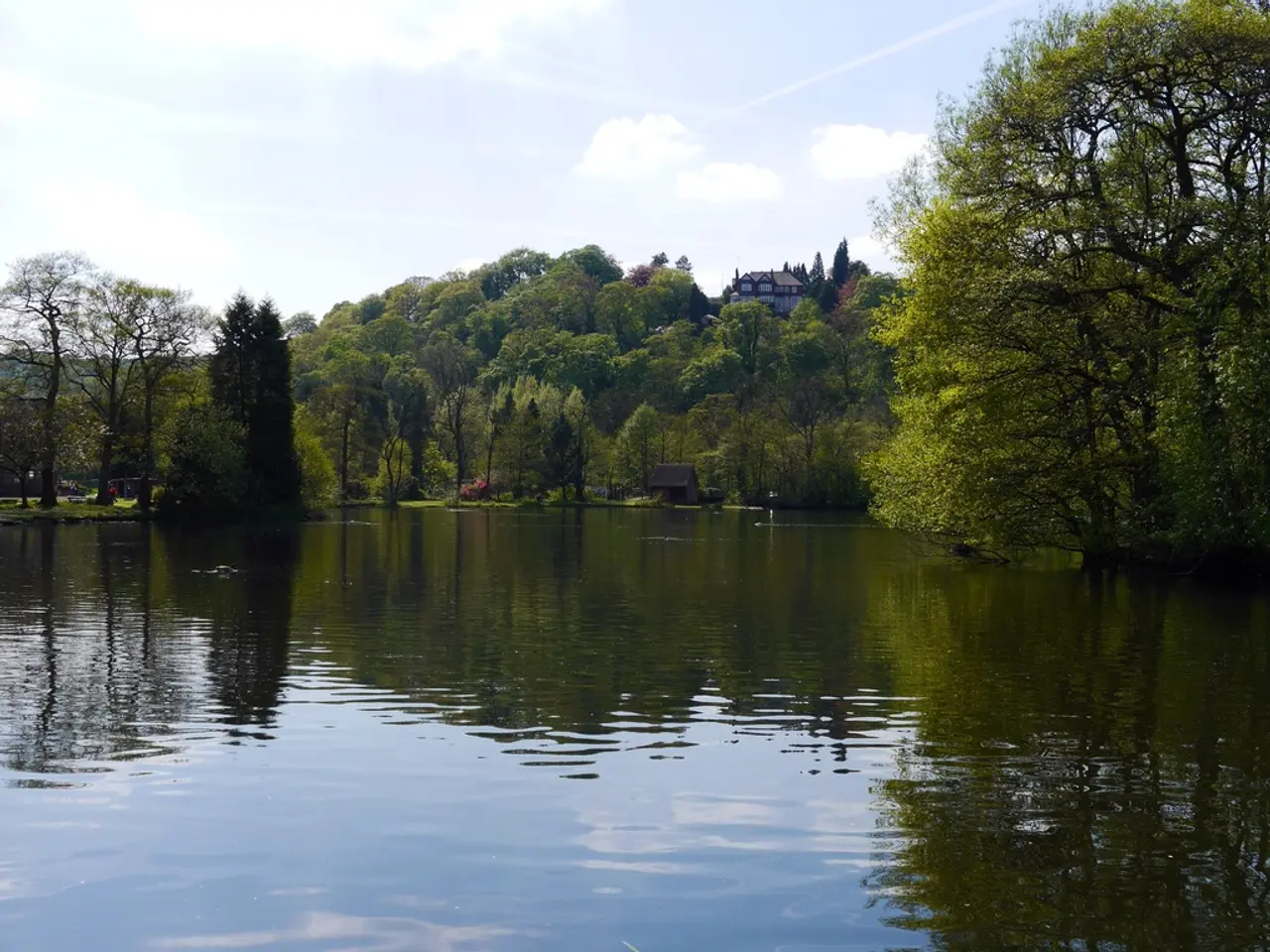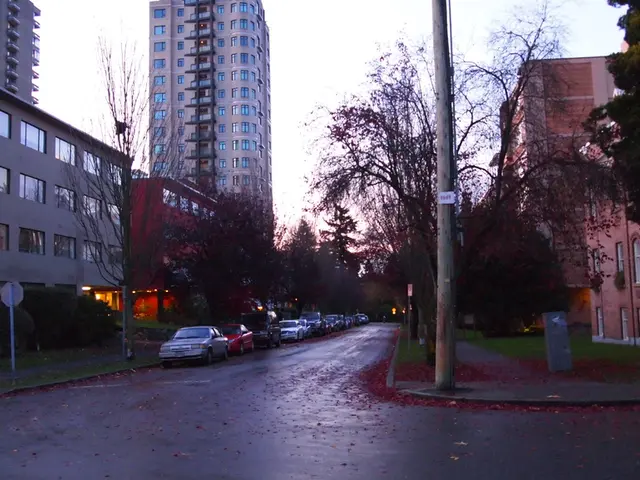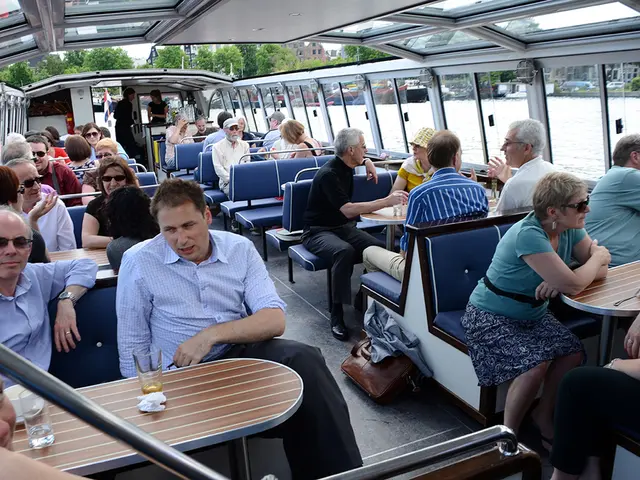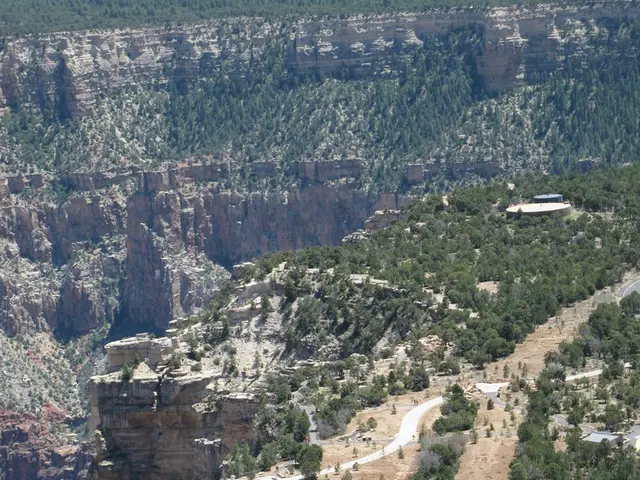England's largest national park, a UNESCO World Heritage Site, boasts some of the country's most breathtaking landscapes.
Nestled within the heart of England's Lake District, the picturesque stretch between Windermere and Grasmere offers a rich tapestry of natural beauty, literary heritage, and charming villages.
Beginning at Windermere, the largest lake in England, visitors can embark on scenic boat cruises from Bowness-on-Windermere. These cruises provide breathtaking views of the lake and surrounding fells, with options to disembark at Lakeside Pier or Ambleside [2][3][4]. Bowness offers lakeside shops, cafes, and stunning vistas, making it an ideal starting point for your adventure.
As you journey north towards Grasmere, you'll encounter a village that embodies quintessential British charm and literary connections. Grasmere is home to Dove Cottage, the first family home of poet William Wordsworth, now a museum showcasing his works and life [1][3]. Adjacent to Dove Cottage is the Wordsworth Museum, providing deeper insights into the poet's legacy [1][3].
The village is also famous for its local gingerbread, with the Grasmere Gingerbread Shop drawing queues despite its small size [3]. For those seeking outdoor activities, Lake Grasmere offers serene walks, kayaking opportunities, birdwatching, and viewpoints like Loughrigg Terrace [1].
For the more adventurous, Easedale Tarn and Helm Crag offer stunning hiking spots with rewarding views [1]. Along the route, you can visit charming villages such as Hawkshead, linked to Beatrix Potter and Wordsworth, where you can enjoy local pubs and traditional cream tea [2].
Tarn Hows, a tranquil and iconic beauty spot close to the route, is known for its scenic walks and Beatrix Potter connections [2]. For a quintessential Lake District experience, consider combining a visit with a traditional cream tea at historic locations such as Lindeth Howe Hotel in Bowness-on-Windermere [2].
On the other side of Windermere lies Coniston, a village near Coniston Water that blends tranquility with lived stories. A small museum in Coniston brings together the memories of Ruskin and Donald Campbell, the pilot who tragically disappeared on Coniston Water during a speed record attempt in 1967 [1]. The banks of Coniston Water provide a peaceful interlude, while the Old Man of Coniston, an emblematic rounded summit in the region, looms over Coniston Water [1]. Brantwood, the residence of poet and artist John Ruskin, is located on the east shore of Coniston Water [1].
The ascent of Scafell Pike, England's highest peak at 978 meters, takes place in an austere setting, between scree and dark rocks shrouded in mist [1]. The Lake District National Park's official website can be found at www.lakedistrict.gov.uk [1].
William Wordsworth, a major figure of English romanticism, settled in Grasmere at the beginning of the 19th century. His house, Dove Cottage, can still be visited there [1]. At Brantwood, visitors can see John Ruskin's watercolors, manuscripts, and his desk with a view of the water [1].
The valleys of Borrowdale and Buttermere in the northwest of the Lake District offer more open perspectives with trails following clear streams and crossing small passes amidst ferns and heather [1]. Wast Water, the deepest lake in the country, is located near Wasdale Head [1].
In conclusion, the stretch between Windermere and Grasmere in the Lake District offers a wealth of activities that blend cultural exploration, natural beauty, and traditional local experiences, making it a rich and rewarding part of the Lake District to visit [1][2][3][4].
In the picturesque journey northward from Windermere, visitors can explore the home and garden of poet William Wordsworth, Dove Cottage, showcasing his works and life, supplementing their in-flight reading with a touch of literary heritage [1]. Furthermore, as one ventures towards home-and-garden destinations like Grasmere, they'll delight in outdoor activities such as kayaking in Lake Grasmere or hiking at Easedale Tarn, enriching their travel experience with diverse experiences [1].





